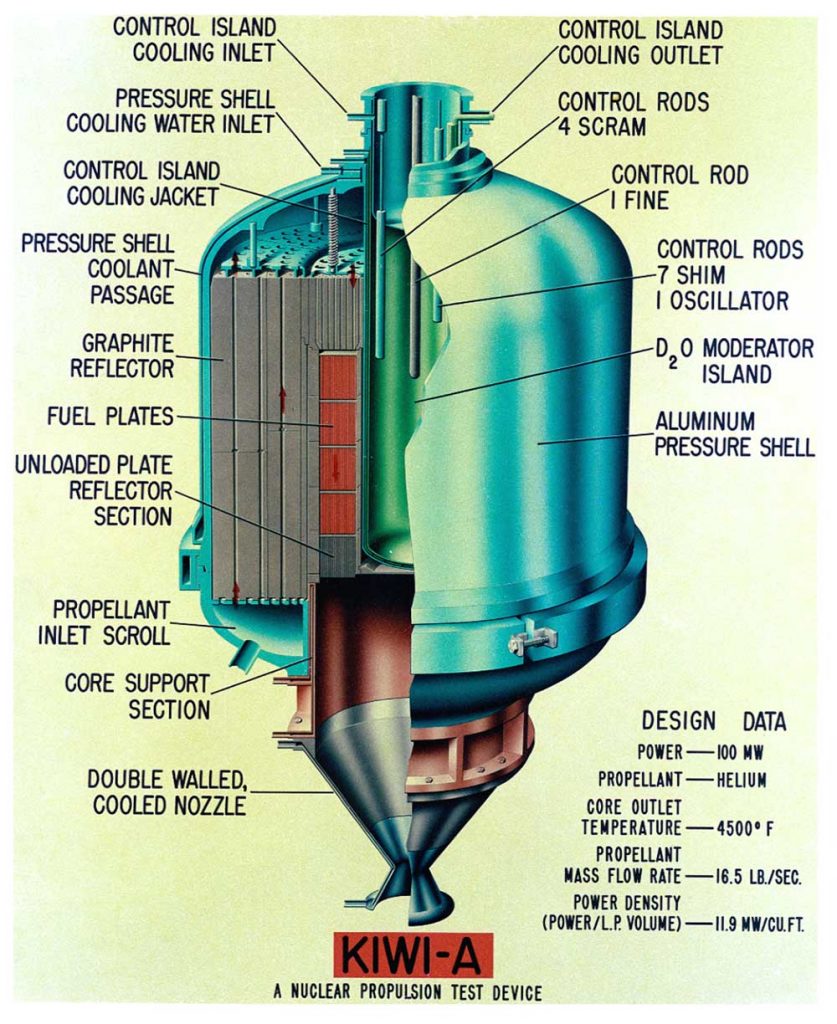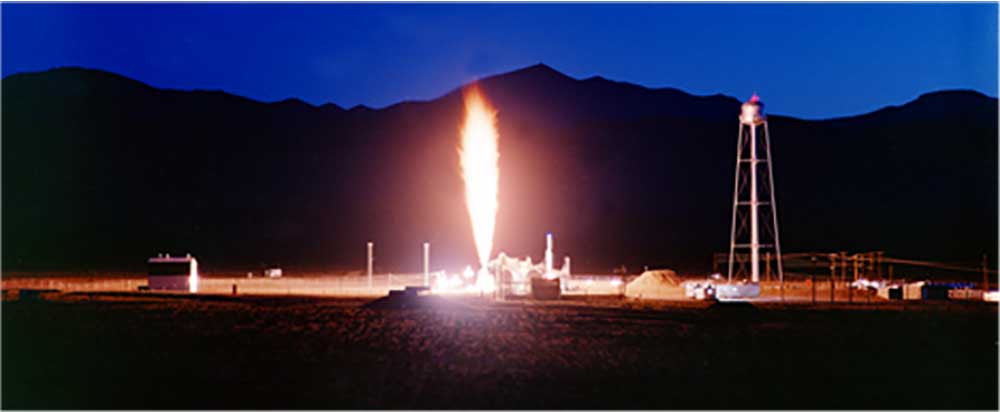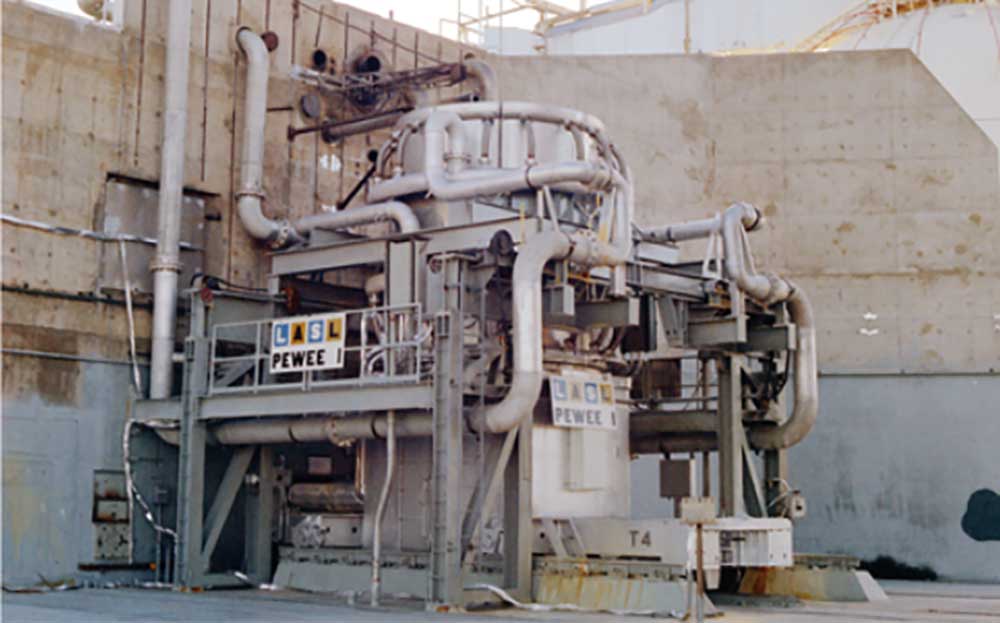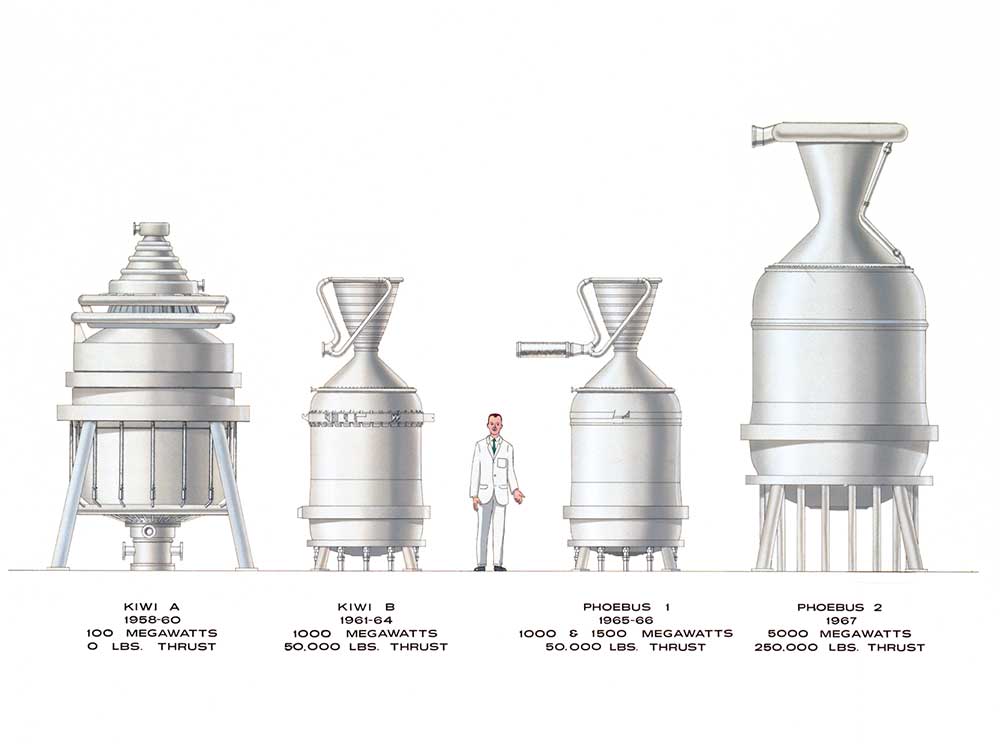Los Alamos historian recounts how Project Rover overcame insurmountable technical problems

The quest to ferry astronauts to Mars and beyond on rockets powered by nuclear reactors offers object lessons both in astounding technical achievement and in the complex political twists and turns that affect important research projects.
That was the conclusion of “Beyond the Moon: The Story of the Rover Program, 1955 to 1973,” part of the 75th Anniversary Speaker Series delivered by Los Alamos National Laboratory senior historian Alan Carr.
The research originated in the quest to deliver a rocket that could propel the early, multi-ton thermonuclear warheads across the globe. Conventional rocketry couldn’t do it, he said.
“This was the origin of our Rover program,” Carr said. “We’re not going to start out trying to get to Mars; we’re going to start out trying to get H-bombs to Moscow,” Carr said.
The program goals, sponsors and funding shifted every few years as the Rover team made steady, if intermittent, progress.
Work began in earnest in 1954 when the Air Force directed Los Alamos and Lawrence Livermore national labs to explore the feasibility of nuclear rocket engines. Within a year, building on the previous decade of basic reactor research, Los Alamos established the Nuclear Rocket Propulsion Division and sponsors seemed pleased, “but things are going to change,” Carr warned.
He then took Sandians on a 90-minute roller-coaster ride up and down the project’s nearly two decades of successes and failures. Carr blended tales of astounding technical breakthroughs and setbacks with accounts of huge shifts in federal priorities from the 1950s on. Ultimately, the letdown after the 1969 moon landing and ever-growing budgets for the Vietnam War and President Lyndon Johnson’s Great Society resulted in Project Rover’s demise with the cancellation of NF-1, the Nuclear Furnace, in January 1973.
High highs and low lows
“The Rover program is very much a series of very high highs and very low lows,” Carr said.

Lawrence Livermore branched off to work on Project Pluto, a nuclear ramjet engine, as work at Los Alamos continued. However, by 1956, the breakneck pace of improvements in shrinking the weight of thermonuclear weapons and huge leaps forward in the power of conventional rockets rendered the notion of reactor rockets hurling those early H-bombs at the Soviet Union less practical.
Initially, the Atomic Energy Commission was responsible for nuclear rocket engines while the U.S. Air Force and private industry developed missiles. After the Soviet Union launched Sputnik in October 1957, the project quickly pivoted toward space travel and NASA took over sponsorship.
Carr recounted the rapid changes during that period, as the goal of creating a nuclear Intercontinental Ballistic Missile went away and Project Rover was “rebranded” for space travel. He quoted former Los Alamos Director Norris Bradbury: “It (Sputnik) rescued the nuclear rocket program, although we didn’t really have one.”
Starting with development of the KIWI-A and KIWI-B reactors, Rover researchers built a test stand in Jackass Flats at the Nevada Test Site, ran the first full-scale test of KIWI-A in July 1959 — 70 megawatts for five minutes — and quickly learned that they faced a big technical challenge in protecting the reactor’s graphite core from damage by the hydrogen fuel.
Still, by any engineering measure, the KIWI series rapidly proved the feasibility of something that seemed well-nigh impossible at first glance.
“That is mind-blowing to me,” Carr said. “You have gone from talking about it to a test in a year and a half.”

Rocket tests and weapons tests
Testing continued on variants of both reactors for a few years, with some successes and multiple accidents. The only constant seemed to be budget woes, especially after the nuclear weapons testing moratorium ended in April 1962, as funds began flowing from Jackass Flats back to Frenchman’s Flat.

“(The Russians) set off 57 devices over the next 65 days,” Carr said, recounting nonstop nuclear tests by the U.S. and Russia before, during and after the Cuban missile crisis. “This is, arguably, the most dangerous moment in human history.”
Then came another one of those high highs, Carr said. President Kennedy announced the goal of putting men on the moon, and support for nuclear rockets blasted off again in the belief they could push the U.S. ahead in the space race into missions beyond the moon.
The pace of testing increased in the mode of two steps forward for each one back — “limited success; marginal progress,” Carr said — until, finally, in August 1964, KIWI B4-E ran for eight minutes at 900 megawatts, a spectacular success. With high hopes, the all-powerful inventors of acronyms at the lab dubbed the future flightworthy reactor engine NERVA — the Nuclear Engine for Rocket Vehicle Application.
But just as a future launch looked likely, other budget priorities won out and the flight program formally ended in early 1964.

“Rover became an R&D project, a program without a specific mission,” Carr said.
In an aside, he told Sandians how Albuquerque played a big role in Rover, and in the early nuclear weapons program. A Duke City railroad car manufacturer, American Car and Foundry, had the responsibility of building not only the complex reactors that needed to withstand incredible temperatures, but also some of the key components for the first full-scale thermonuclear weapon.
“We don’t want to forget ACF, a partner of ours way back in the day,” he said.
“We called them up and said, ‘Can you fabricate a nuclear weapon for us, a device, in the Pacific,’ and they put the Mike device together,” Carr said. “We called them up again and said, ‘What about building some nuclear rocket engine parts together as well?’”
Phoebus fires
But that now mission-less Rover program continued with tests of the Phoebus series of prototype reactor rocket engines. The first fired for 10 minutes at 1,090 megawatts in June 1965, then 1,500 megawatts for 30 minutes in February 1967 and, finally, 4,080 megawatts with Phoebus 2A during a 12-minute run on June 26, 1968. A later test version, Peewee, the “pocket rocket,” reached 4,500 degrees Farenheit and proof of principle that it could be adapted for space missions.
Carr said most modern nuclear power plants operate at roughly one-quarter of the power demonstrated in those 1968 experiments and are many times larger.
“The Phoebus 2A was the most powerful reactor ever built,” Carr said. “You could power 8.5 million toasters,” he said.
In fact, Phoebus was 30% more powerful than the biggest chemical rocket engine SpaceX has devised, nearly six decades later. See video of Phoebus testing here.
In the aftermath of Project Rover, some of the researchers took what they had learned into the suite of energy programs that experienced rapid growth at Los Alamos and Sandia during the 1970s.
However, Carr said the most wide-reaching result of Rover, barring a revival one day of a nuclear rocket to take man beyond the moon, is Rover scientist George Grover’s humble heat pipe, adapted by NASA to manage the huge temperature fluctuations in satellites.
The heat pipe was the most significant of many spinoff technologies, found in phones, computers and numerous other devices used every day, Carr said.
“Why doesn’t your cell phone melt in your hand?” he asked. “This ubiquitous technology that we all have — multiple heat pipes in our lives . . . It all started out with this program.”
Watch a recording of Carr’s talk in Sandia’s Digital Media Library.